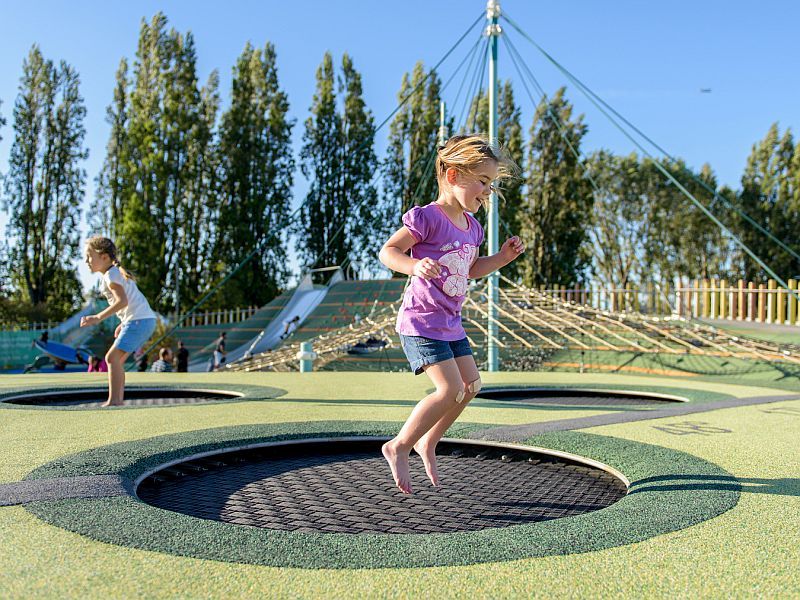SATURDAY, July 29, 2017 (HealthDay News) — A trampoline may have your kids jumping for joy, but the American Academy of Orthopaedic Surgeons reminds parents of potential dangers.
In 2015, more than 295,000 medically treated trampoline injuries occurred in the United States. These included almost 103,000 emergency department visits, according to the U.S. Consumer Product Safety Commission.
“We want children to enjoy exercise and physical activity, especially during the summer months, but parents and caregivers should know about the dangers of trampolines and the risk for serious injury, especially in very young children,” academy spokeswoman Dr. Jennifer Weiss said in a news release from the surgeons’ group.
“Children younger than age 6 are less likely to have the coordination, body awareness and swift reaction time necessary to keep their bodies, bones and brains safe on trampolines,” said Weiss, a Los Angeles pediatric orthopedic surgeon.
The most common trampoline injuries are sprains and fractures caused by falls on the trampoline mat, frame or springs; collisions with other jumpers; stunts gone wrong; and falls off the trampoline onto the ground or other hard surfaces, according to the safety commission.
The surgeons’ group offers the following trampoline safety tips:
- Don’t let children younger than 6 years use trampolines. Only one person at a time should be on the trampoline. Place the trampoline-jumping surface at ground level. Remove trampoline ladders after use to prevent unsupervised use by young children.
- Regularly inspect equipment and throw away worn or damaged equipment if you can’t get replacement parts.
- Don’t rely on safety net enclosures for injury prevention because most injuries occur on the trampoline surface. Check that supporting bars, strings and surrounding landing surfaces have adequate protective padding that’s in good condition.
- Close adult supervision, proper safety measures and instruction are crucial when a trampoline is used for physical education, competitive gymnastics, diving training and similar activities.
- Have spotters present when participants are jumping. Do not allow somersaults or high-risk maneuvers unless there is proper supervision, instruction and protective equipment such as a harness.
More information
The American Academy of Pediatrics has more on trampolines.
Copyright © 2025 HealthDay. All rights reserved.

